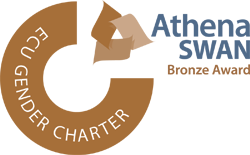Medieval Literature Class
Whan that Aprill with his shoures soote
The droghte of March hath perced to the roote,
And bathed every veyne in swich licour
Of which vertu engendred is the flour;
Whan Zephirus eek with his sweete breeth
Inspired hath in every holt and heeth
The tendre croppes, and the yonge sonne
Hath in the Ram his half cours yronne,
And smale foweles maken melodye,
That slepen al the nyght with open ye
(So priketh hem nature in hir corages),
Thanne longen folk to goon on pilgrimages,
And palmeres for to seken straunge strondes,
To ferne halwes, kowthe in sondry londes;
And specially fram every shires ende
Of Engelond to Caunterbury they wende,
The hooly blisful martir for to seke,
That hem hath holpen whan that they were seeke.
Bifil that in that seson on a day,
In Southwerk at the Tabard as I lay
Redy to wenden on my pilgrymage
To Canterbury with ful devout corage,
At nyght was come into that hostelrye
Wel nyne and twenty in a compaignye
Of sondry folk, by aventure yfalle
In felaweshipe, and pilgrimes were they alle,
That toward Caunterbury wolden ryde.
The chambres and the stables weren wyde,
And wel we weren esed atte beste.
And shortly, whan the sonne was to reste,
So hadde I spoken with hem everichon
That I was of hir felaweshipe anon,
And made forward erly for to ryse,
To take oure wey ther as I yow devyse.
Developing Your Thoughts
There are many differences between the manuscript version and the edited text with which we began. Some of these are irrelevant to style, as for example the abbreviations (marked in parentheses in the transcription); the inconsistent capitalisation; or the occasional use of an older letter form, such as the 'thorn' (þ) at line 18 of the manuscript. Neither need we pause here over minor differences between the edited text and the manuscript (e.g. line 10 'ey' edited text versus 'eye' in the manuscript, or from/fram at line 15). Others might be relevant. Take for example the punctuation of the manuscript: syntax is not marked by punctuation corresponding to modern practice. On the contrary, there are no punctuation marks of the modern kind except capital letters; the punctuation of the modern edited text is added by the editor, to help modern readers pick their way through the syntax. This manuscript text is punctuated, but according to an older system, where the punctuation marks are designed to help the eye and perhaps breath of the reader: the '/' marks (called virgules) mark caesurae, and indicate the appropriateness a small pause in the live or silent reading. The size of the initial letters also gives cues to the reader for relative emphasis of different opening words: the first 'W' takes up the depth of 6 lines, and is elaborately decorated, whereas the less elaborately decorated 'B' of 'Bifil' at line 19 occupies the depth of only two lines. The fact that a larger letter appears at that point confirms our earlier observation about the basic division in this passage, between lines 1-18 and 19-34.(The fact that we can read the manuscript quite easily without modern punctuation might remind us that punctuation is generally a superficial marker of syntactic structures; for the most part modern punctuation follows, rather than creates, syntactic structures. Discussion of punctuation marks in Practical Criticism is not often, therefore, a very valuable way into the style of the passage).
If you had seen more manuscripts from this period, you would also be able to say confidently that the style of presentation (both the beautifully formed script and the decorative illumination), contribute to a sense of this manuscript being a very special, deluxe object. Certainly Chaucer's performance as poet is imagined as a courtly entertainment in this image, taken from the frontispiece of a manuscript of another Chaucerian poem, Troilus and Criseyde (c. 1386). This manuscript, dateable to the early fifteenth century, is housed in The Parker Library, Corpus Christi College Cambridge (MS 61, Reproduced by kind permission of the Master and Fellows of Corpus Christi College, Cambridge), and it represents Chaucer reading his poem aloud to a courtly audience, while the upper frame of the image depicts a scene from the poem being read.
Having considered the style of this passage in detail from many perspectives, we are in a position to answer our initial question about the applicability of the methods of Practical Criticism to medieval texts (or at least to this medieval text). The form of address and certain aspects of the manuscript presentation of this passage suggest that it was a text designed to be read aloud rather than meditated on privately. For all that, it remains true that the dense verbal texture of the passage is susceptible of very close reading. That is not necessarily characteristic of all medieval (or of many more modern) texts, but the techniques of Practical Criticism remain useful in analysing a wide range of kinds of writing, from the highly to the lightly textured.
Now that we have considered this text stylistically, what further directions might we take?
©James Simpson 2000

